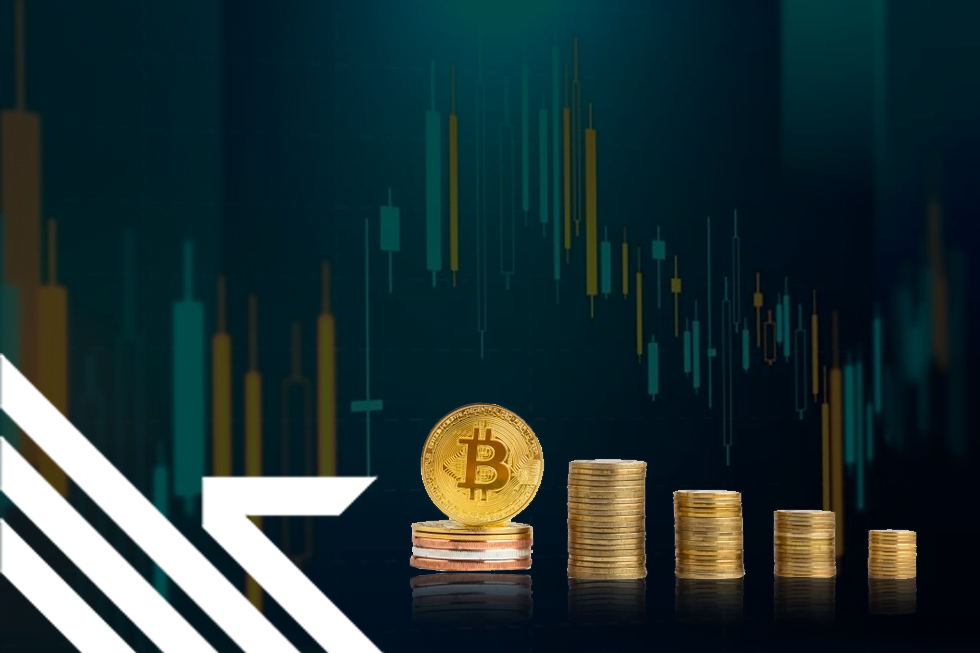Besides decentralization, the most differentiating feature and an important selling point of Bitcoin and other cryptocurrencies is their deflationary nature.
With this feature, cryptocurrencies stand opposite fiat currencies like the US dollar, the Euro, and the Chinese Yuan. The latter are mostly inflationary currencies.
But what is the meaning of the words deflationary and inflationary?
They are derived from the antonyms inflation and deflation.
In simple terms, inflation happens when the volume of a currency in circulation is significantly increased. For example, if the total units of dollars in circulation are 40 trillion, adding 10% inflates the currency. On the other hand, deflation keeps the volume of a currency constant even when there is increased economic activity.
When a currency is designed so that new units can easily and arbitrarily be released into circulation, it is inflationary. Meanwhile, when a currency is designed with a cap on the number of units that can ever be released into circulation, it is deflationary.
Contrary to popular belief, most new fiat currency units are not released into circulation by printing new bills or minting new physical coins. Most new fiat currency units are released through checkbooks and credit issued by banks to individual customers, corporate entities, and the government.
With that stated, inflation makes a currency to lose its value, leading to increased prices of goods and services.
In macroeconomics, inflation is considered a critical component. That is because it is a force that materially influences the production and consumption of goods and services in an economy.
Besides the forces of supply and demand, the volume of the currency being used also determines the price of goods in a market.
If the currency supply is low, the units needed to purchase an item are fewer. On the other hand, if the currency’s supply is high, the buyers are more likely
to compete to pay a higher price—more units of the currency- for the same item.
The most used method for measuring inflation is the Consumer Price Index (CPI). A basket of commonly purchased items in an average household is created, and its cost is tracked over time.
If the total cost of the basket of goods goes down over time, then it is determined that the supply of money is low. On the other hand, if the cost of the basket goes up, then inflation is detected.
It is important to point out that some economists, especially those in the Keynesian school, consider reduced economic production to cause inflation. The reasoning behind this is that prices go up when there are fewer goods in the market to be bought with the currency in circulation. Meanwhile, economists in the Austrian school do not consider reduced production to cause inflation. To them, prices simply go up due to the reduced supply of goods and services, and, more importantly, that should not have anything to do with the currency volume. Inflation is also described in terms of increasing and decreasing purchasing power of the currency.
Advertisement
Join Club Swan and get... more!

Buy and sell your crypto at the best rates and spend them or transfer them to another wallet. You can seamlessly spend your crypto with the Club Swan card anywhere in the world. Everything from one account, on one platform.
- Buy, sell or store 9 different crypto currencies, including: Bitcoin (BTC), Ethereum (ETH), Litecoin (LTC), Bitcoin Cash (BCH), Tether (USDT), BAT, Paxos (PAX), USD Coin (USDC) and EOS.
- Low fees from 0.5%*.
- One simple rate for buy and sell. No hidden margin built into our prices.
- Seamlessly spend your crypto with the Club Swan card.
- Turn your crypto into traditional currencies.
- Quick and simple wallet to wallet transfers.
- Free transfers between Club Swan members.*
- 24/7 Customer support.
Club Swan's flexible account gives you access to multiple traditional currencies, live real time exchange rates, bank transfers and an elegant metal card allowing you to spend in more than 150 currencies around the globe.
- Live traditional currency exchange rates.
- Bank transfer exchange rates typically 4-8% better than high street banks.
- USD, GBP, EUR, CNY, and JPY accounts*.
- Transfer funds in and out of your account with SEPA/SWIFT/Faster Payment/Fed Wire Payments.
- Spend 150+ traditional currencies around the globe with Club Swan card.
- International ATM withdrawals.
- Daily ATM withdrawal limit $1,500.
- High account limits.
- Free transfers between Club Swan members*.
- FCA regulated for your peace of mind**.
- 24/7 Customer support.
Save precious time and money. Use your Club Swan virtual assistant for your travel needs. We also offer personal shopping, VIP event access and unique experiences.
- Save up to 40% on flights and holidays.
- Exclusive negotiated rates on First and Business class airfares.
- Private transfers.
- Luxury car rentals.
- Personal shopping assistant.
- Luxury product procurement.
- Concert tickets.
- Activity experiences.
- Event access.
- VIP dining & restaurant bookings.
- Private event & party coordination.
- 24/7 live chat concierge support.
Inflation in a good light
There is no consensus among economists whether inflation is a good or bad phenomenon. Like most other economic concepts, the two contradicting positions are primarily between the Keynesian and Austrian schools of the economy.
Keynesian leaning economists believe that some inflation levels are necessary for the economy to function optimally. They posit that inflation encourages economic growth and also prevents recession.
For example, when production goes up, and prices go down, they see the injection of more currency into the economy as a proper remedy.
They theorize that not introducing inflation to the economy has adverse effects. In particular, they point to consumers holding on to their cash, hoping that the prices of goods and services will go even lower in the future, with the
decreased spending slowing down the economy in what they call the Paradox of Thrift.
Most financial regulators around the world happen to lean more towards the Keynesian school of the economy in regard to the place of inflation in the economy. For example, the US Federal Reserve strives to maintain the annual inflation rate at about 2%.
Indeed, they heavily rely on inflation to control and guide the economy. Whenever they want to increase economic activity, they increase the money supply. They take the opposite action when they need to encourage saving and investment.
With that being the case, the general trend has been continuously increasing inflation over a long time. For example, in 1960, a US dollar could afford you three gallons of gas. For the same amount, you could get yourself a double-decker hamburger with French fries, salad, and ice cream for dessert.
In 2021, three gallons of gas cost slightly over $10, and a double-decker hamburger costs as much as $20.
In 60 years, the dollar has lost close to 90% of its purchasing power to creeping inflation. This makes the dollar not an ideal currency for long-term storage of value.
The counter-argument
The Austrian school of economics takes any form of inflation unnecessary, if not harmful. In particular, those in this school believe inflation robs consumers of the value, especially in their long-term savings.
They believe that a currency should be invariant in the equation created by supply and demand market forces. In particular, when prices rise, the focus should be on the production of goods and not the supply of money.
For a long time, those in this school of economics saw gold and silver as the ideal currencies. That is because their inflation is marginal, and their purchasing power seems to go up over time. Of course, there is also the consideration that the supply of gold and silver is not in the control of any single entity.
With the arrival of cryptocurrencies, many from this camp have identified it as an even better form of currency. Besides having its supply permanently capped and independent of third-party control, cryptocurrencies are easier, cheaper, and faster to send even from one corner of the globe to the other. They also don’t need costly security and storage logistics like precious metals do.
The first deflationary currency
Before the launch of Bitcoin in January 2009, no other deflationary currency had ever existed.
You might be thinking, ‘what about gold and silver?’
Gold and silver are inflationary, too, except that theirs is marginal. According to several sources, every year, between 2500 and 3000 tonnes of gold is mined and added to the global collective reserve every year.
This supply is not anticipated to decline or stop any time soon. If anything, with increasing technological capacity, we might likely witness the discovery and extraction of copious amounts of gold, and silver, from inaccessible areas. That includes areas beneath the Earth’s crust, the deepest parts of the oceans, and even neighboring planets.
The amounts mined from these new locations could be large enough to dilute the value of what is already in circulation significantly. At the moment, though, 3000 tons of gold translates to an annual inflation rate of about 1.5%. This does not dent gold’s purchasing power significantly, especially considering the growing global population and economic activity.
Bitcoin was the first cryptocurrency and the first truly deflationary currency.
Two critical features make Bitcoin a deflationary currency.
1. The 21 million cap
Everyone understands that only 21 million bitcoins will ever be released into circulation. At first glance, this might seem like a small number of units for a global currency.
However, with a more detailed look, you discover that each bitcoin is divisible into 100 million units known as Satoshis—named after the founder of the cryptocurrency.
2. Difficulty in changing the rules
It is nearly impossible to remove or change the 21 million cap. That makes Bitcoin truly deflationary. If this was not the case, it could be difficult to trust that someone wouldn’t come along later and add another 10 or 21 million bitcoins into circulation.
Indeed, it is easy for an entity to set up a digital currency system and create 21 million tokens. The harder part is to guarantee that the amount will not be changed sometime in the future and, as a result, devalue the tokens held by early adopters.
To remove the 21 million cap on the Bitcoin currency, the entire community has to form a consensus and agree to download and run the core software version that implements the change. Not even Satoshi Nakamoto can change this feature of Bitcoin alone.
The deflationary altcoins
Today there are over ten thousand crypto assets, with a significant number of them designed and released to serve as digital currencies. Most of the alternative cryptocurrencies (altcoins) are deflationary like Bitcoin. However, the mechanism of maintaining deflation in many of them is not the same.
The early altcoins have similar caps to that of Bitcoin. For example, Litecoin has a cap of 84 million coins.
Besides the inflation cap limit, other deflationary cryptocurrencies that differ from Bitcoin include the emission rate. Bitcoin has the emission of 21 million coins spread across a period of over 100 years at a declining rate.
Some cryptocurrencies have the entire amount pre-mined and distributed to various stakeholders. Some of it can be kept in reserve managed by a foundation and then used to pay for projects that further the cause of the coin.
An example of such a cryptocurrency is Ripple (XRP), whose 100 billion were pre-mined at the launch in 2012. Its founders release 1 billion tokens every month and sell them to investors.
Controlling inflation through Burning
A cryptocurrency does not need to have a cap on its emission to be deflationary. Over the years, blockchain developers have invented other ways to keep inflation low, even with the coin being emitted for infinity.
In some instances, the blockchain developer has no way but to keep the emission going forever. This is, in particular, the case when they need the cost of sending currency over the network they are building low.
The people (miners) who provide computers to the network (the blockchain) that powers a cryptocurrency and processes transactions need an incentive. In the case of Bitcoin, it is the mining reward, which is the newly released coins. The new coins are first released to miners who sell them to others on exchanges. The proceeds help them cover the costs such as electricity bills.
Small amounts of bitcoins are released about every ten minutes to miners. In 2022, the reward is 6.25 bitcoins every ten minutes. This will halve in 2024 to 3.125 bitcoins. With halving every four years, the last coin of the 21 million will be released sometime in the year 2140.
When there is no more mining reward in the form of newly released coins, the incentive for miners to keep their computers running will come from the fees that users pay.
Today, because the mining reward is sizable, the transaction fees are voluntary. Users attach a transaction fee to encourage the miners to prioritize their transactions. Transactions with fees are processed faster on the Bitcoin network than those with no fees attached. After the 21 million cap is reached, all transactions will have to be sent with a fee attached for the miners.
Of course, this is likely to make using Bitcoin a little more costly. This is the problem those who design cryptocurrencies with no emission cap attempt to avoid. Meanwhile, having no cap exposes the currency to the risks of high inflation.
Some blockchain developers have created mechanisms for destroying (burning) some of the coins in circulation to control inflation. In some designs, an amount almost equal to what is created is destroyed. The burning means the coins are automatically sent to an address where they cannot be recovered. They are technically destroyed.
An example of such a cryptocurrency is Ethereum. There is no cap on the amount of ETH to be released into circulation like is the case with Bitcoin. That can easily lead to significant inflation, which in turn can reduce the purchasing power of ETH.
To prevent this from happening, the cryptocurrency’s core software is designed so that an amount of the fees users pay to have their transactions processed is not paid out to miners but destroyed (burned). In 2019, a protocol known as bonding curve was made available. Individuals designing their tokens can create deflationary tokens on the Ethereum blockchain. The tokens are issued on demand, and when the holder wants to get rid of them, they can sell them back to the smart contract, which destroys them.
Inflationary cryptocurrencies
It is important to point out that a cryptocurrency can be inflationary. They just have to lack a cap on the amount released into circulation and a burning mechanism for destroying some of the coins in circulation.
However, such cryptocurrencies do not exist as serious projects with long-term goals. If they are designed, they are likely to crush under their weight as the purchasing power gets devalued, especially if the adoption rate is lower than the inflation rate.
Why is crypto’s deflation nature important?
Inflation might be great as a tool regulators can use to guide the economy. However, it takes away the capability of a currency to adequately serve as a store of value, which is one of the three core functions of a currency.
Deflationary cryptocurrencies like Bitcoin are proving to be better currencies, especially when being stores of value. This is evidenced in the continued growth in their purchasing power.
In 2010, Laszlo Hanyecz paid 10,000 Bitcoins for two pizzas. Today that amount can house several thousand families and do a lot more for them. That growth in purchasing power is not possible when a currency is inflationary.




